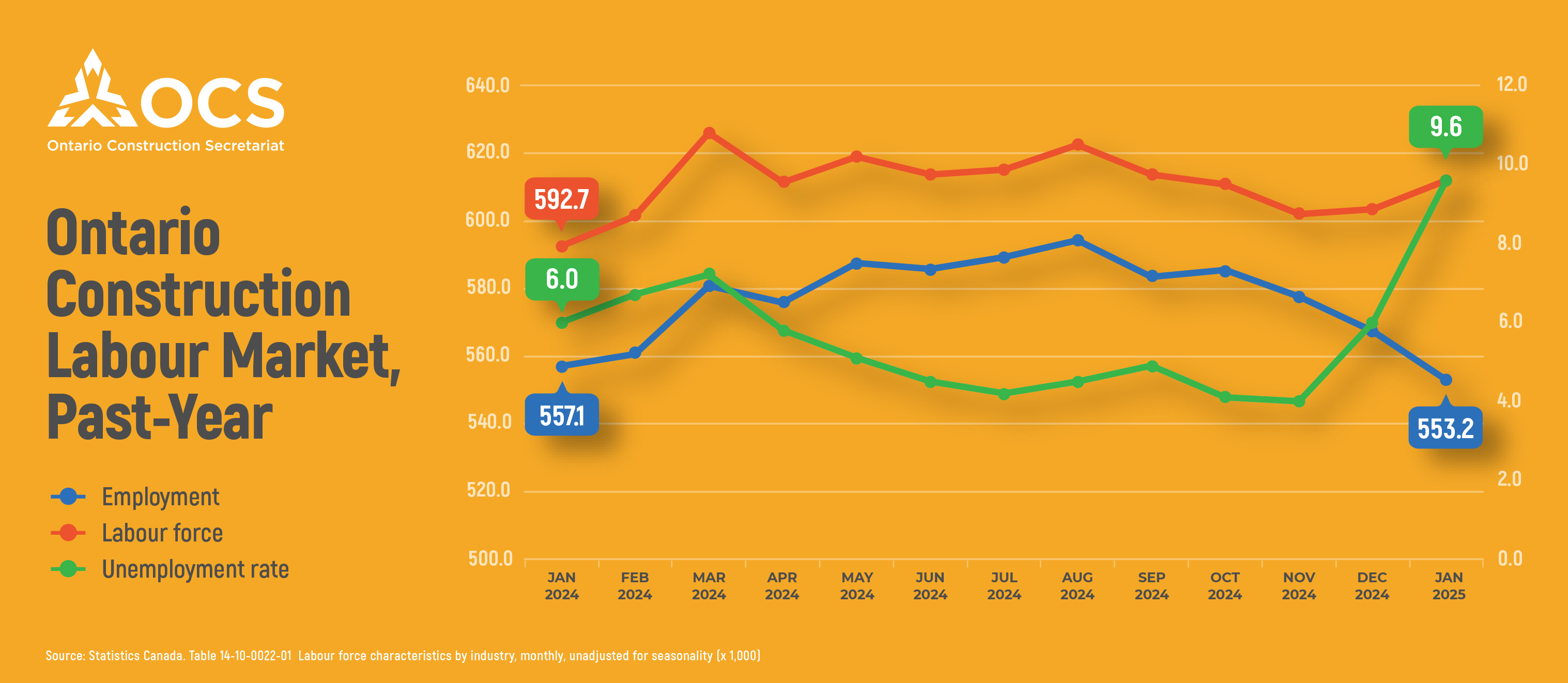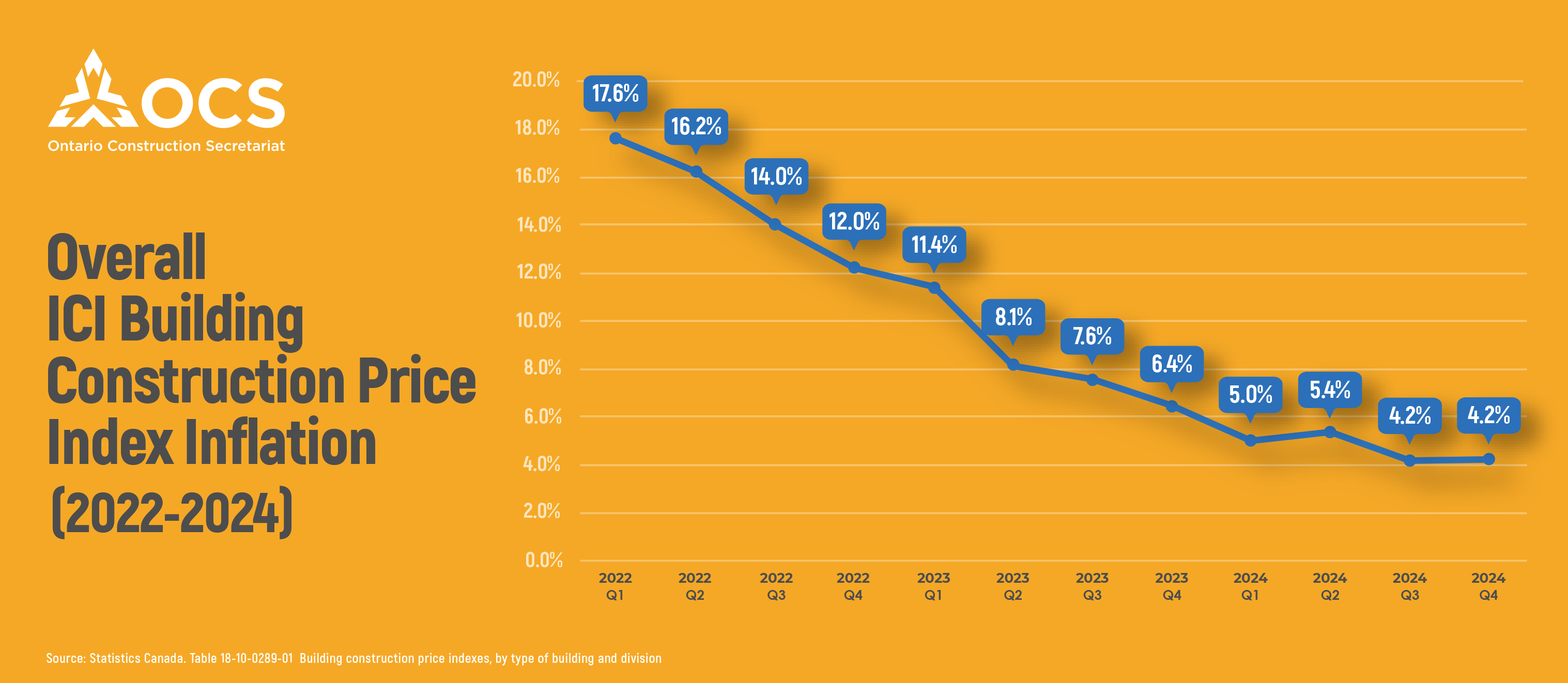


An Ontario Construction Secretariat (OCS) report indicated that a combination of a year-over-year dip in employment and 3.2 per cent growth in the construction labour force led to a spike in the unemployment rate, which rose to 9.6 per cent in January.
Employment for women grew by 0.5 per cent year-over-year, while men’s employment contracted by -0.9 per cent year-over-year.
In terms of the average BCPI inflation for Ottawa, Toronto, and London, it was down significantly in 2024 in comparison to the previous two years. Inflation, however, remains high and near-term inflation appeared to be reheating, particularly in Toronto.
In terms of employment, it shrank both monthly and annually in January. Labour force, however, increased in both monthly and yearly terms, with a 3.2 per cent year-over-year gain. This led to a large increase in the unemployment rate, which jumped from 6 per cent in December to 9.6 per cent in January. While this is higher than what was observed in the last few years, it was lower than January 2021 and on par with January 2019.

Both women and men labour force increases were similar to the overall increase, but women’s employment increased by 0.5 per cent year-over-year while men’s employment fell by -0.9 per cent year-over-year. Among the ages 25 to 54, the gain in employment was 2.4 per cent year-over-year.
At the end of 2024, the BCPI saw an improvement since the beginning of the year when the first quarter annualized inflation was 5.1 per cent. There was a reduction in comparison to previous years when inflation ran in the double digits. Inflation in the ICI building sector is still coming in much higher than headline inflation, despite the improvement.
The near-term inflation is still “running hot,” according to the report. In the fourth quarter there was a reacceleration of the quarterly inflation, ticking up from 0.6 per cent to 0.9 per cent in all sectors. The quarterly increases were slightly larger in Toronto in comparison to Ottawa.
London showed the opposite trend, with slightly lower quarterly increases, but still high annualized inflation. According to Statistics Canada, builders cited skilled labour shortages, land availability, and building code changes as sources of inflationary pressure.
